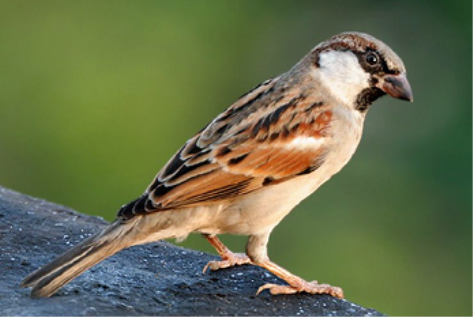
All you have to do is keep an earthen nest in a calm and quiet place to invite the winged guests this World Sparrow Day on March 20.
This came out in a research by Aliasgar Vohra (24), a junior fellow scholar at the department of zoology of Maharaja Sayajirao University of Baroda.
In his research titled “Search for the most suitable artificial nest for house sparrow (Passer Domesticus)”, Vohra found the earthen nests to be the most-preferred ones by the fast-depleting birds and scientifically suitable as their artificial nesting place.
House sparrows have been placed in its Red List by Britain’s Royal Society for the Protection of Birds due to sharp decline in their numbers. Researchers have found that chopping of mulberry trees, disappearance of roof tiles and frequent use of pesticides are some of the reasons for this.
This has led the conservators and bird lovers to start efforts to maintain the population of these small birds in the urban areas by arranging their food and creating artificial nesting places for them. Mostly boxes or containers made of cardboard, wood, plastic and mud are used as their artificial nests.
Though most conservators and non-government organisations, working in this area, are using cardboard or wooden box, earthen nests are most preferred by the sparrows, found the 24-year-old junior research fellow.
According to Vohra, though there is no scientific survey on sparrow population, these birds are rarely seen in Vadodara or Gujarat.
Vohra, who had conducted the research from mid-January to mid-April (breeding season of sparrows) in 2016, had installed 40 nests made of cardboard, wood, plastic and mud in four pockets of old city. Sparrows are still found in Panigate, Mogalwada, Ajabade Mill and Baranpura because of availability of old buildings, which are ideal places for nesting of sparrows, there. Also, there are many grocery shops where sparrows can easily find their food.
Vohra had focused on four parameters — temperature, humidity, illumination and noise – during breeding stages, which starts from selecting places, collection of nesting material, preparation of nest, mating attempts, laying eggs, incubation period and hatching.
The earthen nest provides an ambient temperature for incubation — which lasts from 13 to 17 days — and after hatching, it provides perfect humidity. As the earthen container absorbs extra humidity, it protects the babies from infection, which the other three boxes lack.
Vohra said, “Earthen nests provide them natural feeling as traditionally sparrows make nests in gaps of roof tiles.”
Light and level of noise also play a crucial role in the nest selection, added Vohra. “Silence plays a very critical role for the next few days after hatching as mother sparrow brings food for her younger ones and calls them out. But increasing noise pollution due to vehicular traffic makes it difficult for them to hear. The babies don’t open their beaks as in the initial few days they cannot see. This affects the health and growth of the young sparrows, which also results is longer hatching duration,” said Vohra.
Vohra also observed, sparrows, which eat insects, couldn’t find much food in urban areas due to spraying of DDT in farms. “Sparrows have to forage around 300 to 500 metres away from theirs nest for food,”Vohra said.
Posted on :
Mar 20, 2017